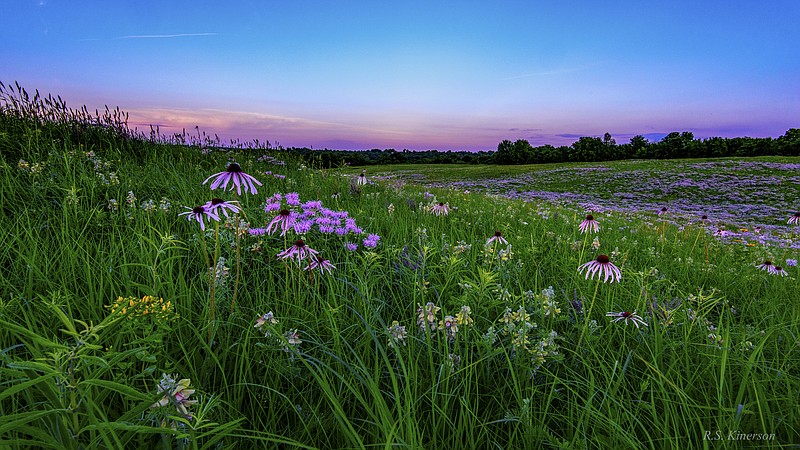A group working to preserve prairie and other native grasslands in Missouri was recently honored for its efforts.
The Missouri Prairie Foundation was presented with the Sacajawea Community and Partnership Conservation Award from the Missouri Conservation Heritage Foundation.
Created in 1966 by residents concerned with the rapid disappearance of prairie in Missouri, MPF is a 55-year-old, nationally accredited land trust that owns and manages 29 tracts of land totaling more than 4,100 acres, all of which are open to the public.
MPF protects and restores prairie and other native grassland communities through land acquisition, management, education and research. MPF also promotes the use of native plants through its 21-year-old Grow Native program and supports the detection and control of invasive plants by administering the Missouri Invasive Plant Council.
"In 1821, there were up to 15 million acres of prairie in Missouri," said Carol Davit, foundation executive director. "It was in northern Missouri and west of Jefferson City as well as in southwest Missouri. Now, 200 years later, there is less than one-half of one percent of what was original prairie left. That's 50,000 acres."
Davit said roughly half of the prairie land is in conservation ownership and the rest is owned by individuals.
"We have lost and continue to lose prairie as it is converted to other land use," Davit said. "We are very proud of our efforts to be able to acquire prairie so it is preserved."
Some of those areas are near the Bootheel as well as in the Kirksville at Rockport areas.
"There are a number of areas to the south of Sedalia, but most are in southwest Missouri," Davit said.
By definition, prairies are ecosystems that grow where the climate dictates limited rainfall, hot summers and cold winters. Plants growing in prairies are typically non-woody or herbaceous plants.
"We currently have a 40-acre prairie planting in St. Louis County," Davit said. "We carry out educational efforts and have a very active class program."
One of those educational efforts is the Grow Native program where MPF provides materials to homeowners on how to use plants for landscaping. These are plants native to the state that are naturally adapted to growing in Missouri. MPF also organizes native plant sales. One of those is held in March at the Runge Nature Center.
"Prairie is part of Missouri's natural heritage," Davit said. "It's also important to our economic history. The prairies that were plowed made the state economically powerful. We must protect what's left since prairie supports hundreds of pollinating insects, and they pollinate many food crops so we have to have that.
"Prairie plants also store carbon in their roots and some of those roots can extend 15 feet into the ground," Davit added. "That can help mitigate some of the effects of climate change. Also, because their roots run so deep they help the soil become a sponge to absorb rainwater and slow stormwater so that it helps prevent flooding.
"They are irreplaceable and home to some plants that can live nowhere else. We can't reap their benefits if we don't protect the original prairies."

